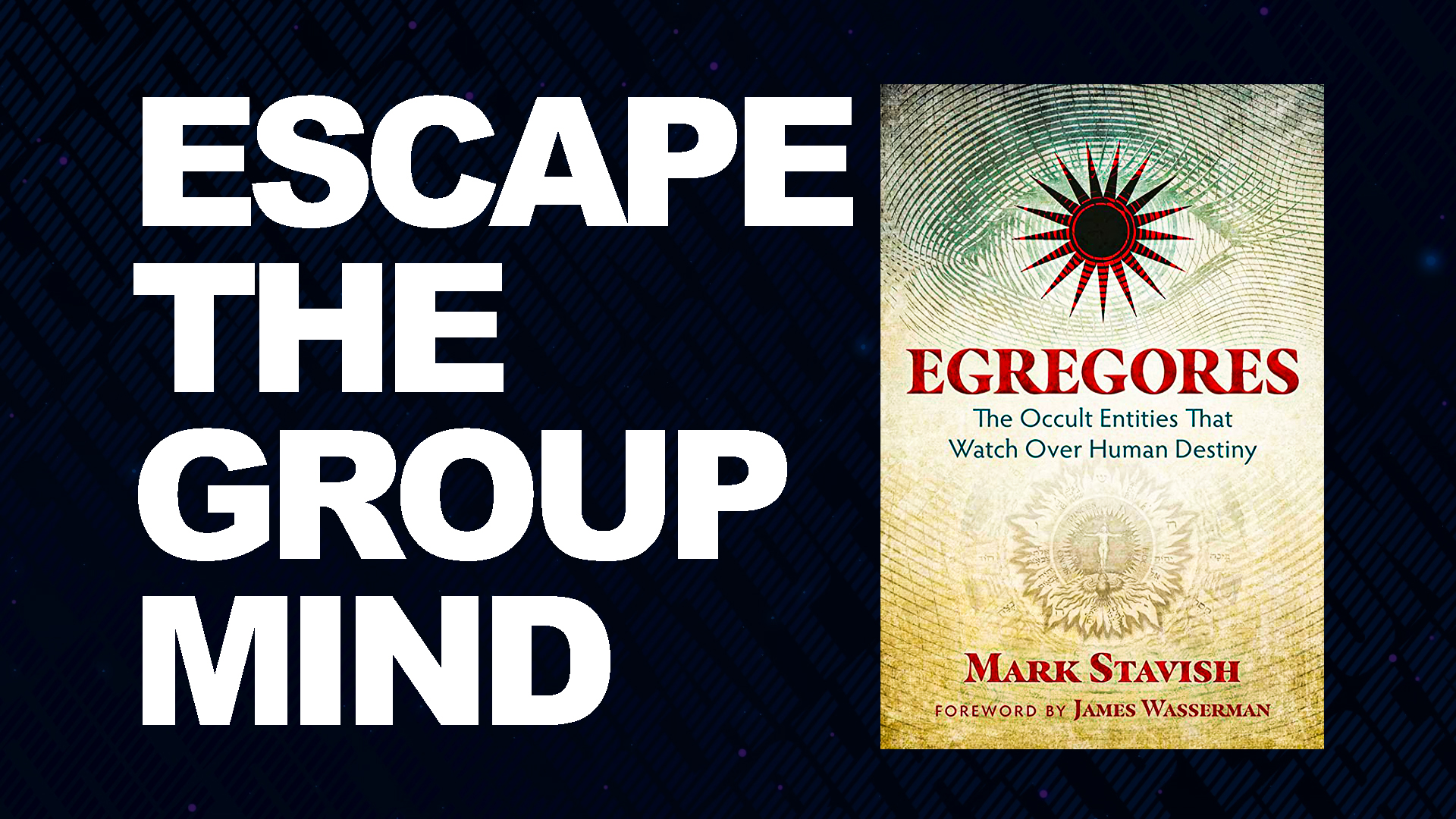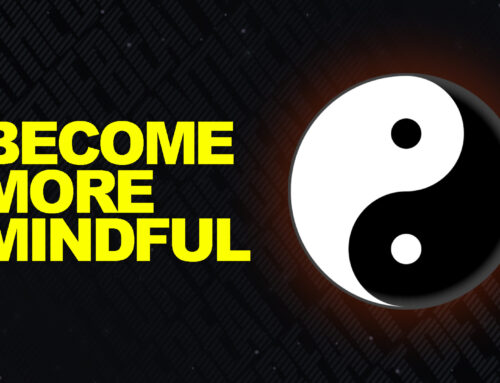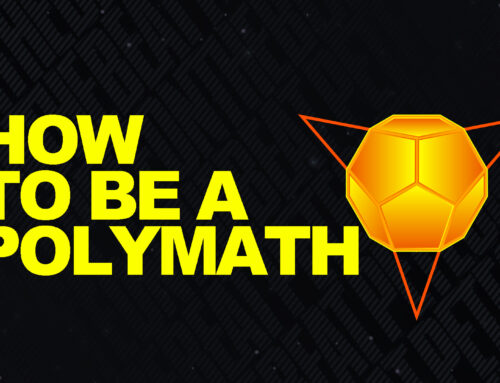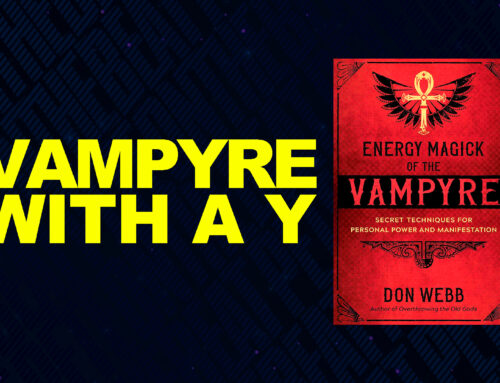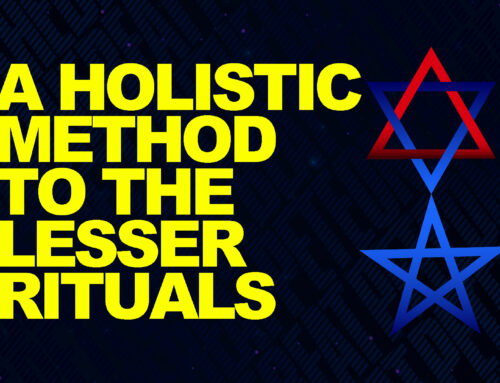Introduction
Published by Inner Traditions, Egregores by Mark Stavish is dedicated to those seeking self-awakening. Reveаling that understanding the concept of egregores is life-changing to such people, the book aims to bring clarity and new horizons to (both) solo and group practitioners. After listening to the audible version twice and finally having the paperback, I’ll summarize and discuss my favorite parts of the book in this video.
What is an Egregore
“The word egregore is Greek in origin and is derived from ‘egregoros,’ meaning ‘wakeful’ or ‘watcher…”
p.2
The author explains the term was first encountered in the book of Enoch regarding an angelic being. Adopted by various mystics and practitioners, this book’s central theme is that 200 fallen angels interbreed with human women, creating a race of Giants (Nephilim) and eventually bringing a battle between good and evil.
The book claims Victor Hugo was the first to use the word egregore in modern language. A bit later, the term was used by Eliphas Levi, who recognized egregores as the fathers of Nephilim. Egregores’ most common definition comes from wictionary.org. As found on p.3, this one follows that an egregore is:
“(…)(occult) autonomous psychic entity composed of and influencing the thoughts of a group of people…”
p.3
While (technically) correct, Stavish views this definition as somewhat ‘incomplete;’ he also remarks there’s another more significant and scarier one. Building on the former, on page 3, the author unravels an egregore is also:
“… a home or conduit for specific psychic intelligence of a nonhuman nature connecting the invisible dimensions with the material world in which we live…”
Collective Entities
Recognizing the second definition as more accurate and thorough, the author defines egregores as the ‘true power source’ of all magickal and religious groups. Considering the works of the Polish occultist Mouni Sadhu, Stavish explains that an egregor is, before all else, a collective entity. This includes states and nations, such as religious and magickal groups and sects.
Areas and Subcultures
Egregores can also occur based on areas, cultures, subcultures, and virtually anything involving groups of people believing in one thing. Hence why they are also referred to as group minds. Though not limitless, egregors’ power can exceed political and spiritual groups.
Spiritual Currents
Providing an excerpt from a private translation of the French Martinist and esoteric Freemason Robert Abmelain’s Practical Kabbalah, on page 50, the book notes an egregore is a ‘force generated by powerful spiritual currents and later fed at regular intervals conforming to a rhythm of harmony with the universal life of the Cosmos, or to a meeting of entities united by a common characteristic…’
Across the Globe
The term ‘egregore’ is unique to the West, but the ideas it conveys ‘aren’t.’ They are so widespread the author sees them as the “basis of all spiritual and magickal practices across the globe.” He also notes some of the most potent religious egregores today include Islam and Buddhism.
Tulkus and Tulpas
Diving into Tibetan Buddhism, the author addresses the concept of tulpas and tulkus. Being animated thought forms taking an autonomous existence, tulpas and tulkus were introduced to the West by the legendary Alexandra David-Neel. In her Magic and Mystery in Tibet, David-Neel reveals that tulpas are primarily ephemeral creations. Tulpas can take different forms. This includes man, animal, tree, rock, etc. As such, tulpas co-exist with their creator. They can even survive him/her and gain certain independence. Tulkus are incarnations of lasting energy directed by an individual. That, Stavish clarifies, is with the object of continuing a given kind of activity after his death.
Structure and Bodies of Egregores
Like actual humans, Egregores have physical, mental, and astral bodies. Physically, they are contained by the bodies of those participating in a particular group. Mentally and astrally, they are the sum total of those individuals. As mentioned on page 6:
“The egregore exists at both ends of the spectrum as well as across it: from the dense material world to the subtle and intangible psychic domain…”
p.6
On page 28, examining the founder of the Servants of the Light, Walter Ernest Butler, Stavish adds, ‘an egregore consists of collective emotions, and the thoughtform itself is amoral, taking its directions from those connected to it.’ Hence it can be perceived as a ‘composite thought form charged with energy.’
Origins of Western Egregores
Based on Stavish’s research, the only (other) author recognizing egregor’s importance in modern times is Joscelyn Godwin. Godwin traces Western egregores’ origins to the semi-animistic beliefs of the ancient Romans and Greeks in his book, the Golden Thread. Also, how ancient cult practices impacted daily life and foreign affairs. Back then, the gods predetermined individuals’ life, which lasted about 35 years.
Rituals and Beliefs
Stavish stresses it is crucial to understand that an egregore is augmented and sustained by human belief and various rituals. If nourished enough, these entities can take on their own life. In such cases, they also have limited power based on their devotees and an endless appetite for further devotion. Stavish and Godwin agree that immortal gods and goddesses, angels and daimons, are (basically) egregors. Also, different nations’ rise and fall ‘has’ much to do with their relations with their deities.
True Initiation is Liberation
Using an excerpt from Jean Dubuis, the founder of Philosophers of Nature, Stavish agrees that ‘true initiation’ is liberation. Your Higher Self can’t free you unless you do that yourself in the realms accessible to you. This liberation begins with understanding egregores and freeing yourself from those not essential.
The Golden Dawn
“For some, the notion of an egregore concerned itself less with being influenced by an angelic or demonic being and more with being under the influence of once-human and now fully perfected beings or masters. These once-human masters, said to be Adepts of the occult arts and sciences, having now achieved the highest levels of spiritual illumination, guided humanity along the Path of Return…”
p.23
Labels like ‘being a fully contacted school’ or ‘having inner contacts’ played a huge role in making the Golden Dawn so attractive to join. Stavish reveals that so-called Unknown Superiors and Invisible Masters are much identical to the Righteous Men of Kabbalah, the Bodhisatwas of Buddhism, the saints of Christianity, etc. Ubiquitous to all traditions, these Stavish remarks are beyond ‘sect and creed.’
Perfected Beings
“Unlike some esoteric schools that advocated a complete dissolution of the personality of the sense of self, these adepts realized the balance between individuality and enlightened awareness and existed as self-perfected autonomous beings…”
p.24
On the other hand, this has some caveats. Though perfected, such beings, the author explains, only sometimes possess the ability to act on the physical world. Often they need an intermediary. And this implies that: (1) they can be contacted directly; (2) they may be part of an egregore or look for ways to create one as a tool for acting on this world.
Comment 1
Segments of this section remind me of the Ciceros saying that particular order’s secret chiefs could easily be adepts who reached the supernal triad’s grades. Based on my research, these ranks are (pretty) impossible to obtain with a physical body.
The Essence of the GD Egregore
The same chapter remarks Egregores’ entire essence can be summed up in a paper called ‘Flying Roll.’ Intended for the adepts of the rank of 5=6 or higher, such reports were written by Samuel McGregor Mathers. Stavish notes that the order’s entire basis is ‘what’s called’ the ‘etheric link.’
The Etheric Link
One is first introduced to this link by joining the order as a Neophyte. This expands the aura, increasing its density. Then, the connection is established in the ‘elemental’ grades. For this to happen, one must engage in ritual and meditation constantly. This fosters the power flow through the link. It also prevents the aura from sealing off. Having its culmination at (7=4), the etheric link can be viewed as an ‘astral’ tunnel with access to various regions. The more of these humans can access, the greater their chances of accomplishing the Great Work.
Beyond Magickal Circles
Examining Jean Dubuis’ perspectives, chapter four reveals joining egregores may have negative consequences working as a trap and not liberation. Therefore, a solo path seems much more healthy and productive, as it minimizes external influences and lets you remain in control.
Comment 2
In a 1998 interview, Dubuis shares with Stavish that his initiation doesn’t need the middle man but only happens when you acquire inner freedom.
“I think that the main problem stands that in the real initiatic path, you must have no priest, no master, or guru. Because the real initiation means that when you present yourself at the door of the temple you are a free being. (…). Freedom is the first thing you must acquire in order to be initiated. The Inner Freedom, of course…”
Joining Organization
The author wisely offers Dion Fortune’s advice to those eager to join any group or organization. According to Fortune, the best way of judging any organization’s spiritual health isn’t by taking its public statements as proof of its integrity but rather by looking closely at the type of person its discipline produces. To make your life easier, Stavish offers an ageless proverb from the bible: ‘Ye shall know them by their fruits.”
Comment 3
This transcends magick and can bring clarity to self-improvers and others. IMHO, basic examples include not taking fitness advice from people who are out of shape, not doing as broke people if you want financial freedom, etc. Stavish emphasizes how detrimental joining a group can be. Especially for individualists. The reason is that, it often leads to reducing one’s ability of independent thinking.
“It is increasingly apparent to those outside the group that any member of it is being influenced to some degree by the pressure of the collective thinking of all linked with it, and unless care is taken, the power of independent thought may be reduced. For many people, this is something they actually seek; they may feel inadequate in the everyday world and feel that by being linked in this way, they are protected from what they see as aggressive tendencies from other people. Or again, they may feel inadequate to deal with new ideas and situations and feel that the Group mind will do their thinking for them, and they will not be in danger of wrong thinking…”
Comment 4
Proper discipline is making conscious and deliberate choices about who and what to follow and accept as a teacher. Considering modern science, you better make those independent from willpower non-negotiables. The section reminds me of a highly close person who was a co-mason but eventually quit due to those same reasons. Also of what Napoleon Hill defines as drifters. And the late Dr. Christopher Hyatt’s take on joining lodges and society in general.
The Law of Attraction
“The fundamental premise of psychotherapy, psychospiritual practices, hypnosis, and a legion of government-funded mind-control experiments is that what we are exposed to often enough we become sympathetic toward. What we focus on, we become…”
The Right Focus
Focusing on the wrong things attracts them to you and also feeds their egregore. An example he gives is the media obsessing with past events or totalitarian leaders doing enormous harm to humanity. Luckily, we favor ourselves and the race by focusing on the beneficial, life-affirming, and productive.
Destroying Egregores
“To remove oneself from the influence of an egregore, particularly a religious, esoteric, or even political one (…), the objects connected with the organization or movement must be destroyed. Fire is the principal means of separating the energetic link and destroying it. This separation and destruction is on personal level but can also be extended to the larger group as well…”
p.103
Explaining why occupying armies destroy symbols and monuments, Stavish notes that while those egregores’ spiritual intelligence will persist for an extended period, without devotees and physical anchors to sustain it, they cannot influence the material world.
Comment 5
IMHO, One can achieve such aims on an individual level following Dr. Christopher Hyatt’s methods of ‘radical undoing; mainly actively rejecting the programming of their environment, whatever that is.
The Mastermind
Including an excerpt from Think Grow Rich, Stavish explains that what Hill defined as a mastermind is no different from what William Burroughs and Brion Gysin call the third mind. While Hill views the phenomena as essential to success, Stavish reveals the same didn’t lead Burroughs to anything good.
Freeing Yourself From an Egregore
While joining specific egregores can be beneficial, often, this is different. Freeing yourself from an egregor is not just possible but doable as long as you are responsible for your life. Egregores have no influence for as long as human beings can be avoided. The first important is doing inner reflection to clarify what you want.
Do-It-Yourself Deprogramming
The keyword is ‘concern.’ Emotions and thoughts are food for egregores; you essentially disconnect and free yourself from an egregore by not feeding it. On the side, merely not being exposed to the group and its activity isn’t enough.
“One should not expect to extract oneself from the psychic influences of an egregore simply because physical contact with it ceased and memories associated with it have been removed. A plan, purpose, and meaning for life is needed to fill the psychic and physical gaps that are left.”
p.109
Removing yourself from an egregore and its physical representatives can have side effects. This includes quitting an addiction, changing a career, or even dealing with death. For this, it’s crucial to be the architect of your future having crystal clarity on how exactly your new life will proceed. Nature abhors a vacuum. So you better know how to fill the emptiness unless you want it to do that for you using the dominating your area influences.
“Only by having a clear understanding of what we desire to accomplish can we know if the groups we associate with will help or hinder us in our journey. Knowing what it is being promised and what is really being delivered is a way to keep us moving toward our goals — and away from those who would use or abuse us in pursuit of their own…”
p.96
To achieve such understanding, remember the maxim written over the Apollo Temple at Delphi, know thyself. To free ourselves from any egregore requires eliminating contact or connection to its members, rituals, activities, etc. Business organizations would have a substantially weaker grasp than religious ones. For occult students, this would include separating themselves from the dominant religious movement.
Mass Media
While still potent, these days, organized religion, at least in many places, may not be the biggest threat. What is ubiquitous, mass media and various cultures and movements are marketing particular stereotypes and ideals. As noted on page 98.
“Whether it is Star Wars and people identifying themselves as Jedi or Sith in the religion category of any given census, or those individuals who follow musical bands or personalities, the purpose of media is, on its most fundamental level, to create an egregore.”(…) “Common characteristics and values can be used to create temporary or transient collective minds or egregores…”
p.98
This isn’t limited to the dominating religion or initiatic organization, including culture and societal programming. In the case of religion, the key is not disrespectfully rejecting its totality but acknowledging its beneficial and positive aspects.
Breaking Egregore’s Hold
The author explains that to break the egregors’ hold, we must utilize what Joscelyn Godwin defines as ‘therapeutic blasphemy.’ The author explains that such deliberate desacralization of the dominant religious themes compensates against their powerful yet very unconscious presence.
Practical Application
Besides ‘knowing thyself,’ the author recommends four practical tools to combat the influence of egregores. Being a ritual partially resembling Regardie’s version of the Rose Cross, the first employs a verse of the 68th psalm.
A Proper Informational Diet
Being lifestyle changes, the other three include avoiding distractions like television, radio, and video games. Said differently, take control of your informational diet. Stivish recommends limiting exposure to them and doing so consciously. Apparently, these help you control dopamine. Complimenting that the second implementation is filling your mind only with defined forms and images that best serve your new goals, purpose, and vision for the future. Doing so ensures you stay in control while minimizing outer influences.
Healthy Spirit, Mind and Body
Being a gym rat, I like that Stavish emphasizes the importance of maintaining a healthy body and exercise regimen. He notes the physical world is of action, and combining word and deed achieves the desired outcome, the essence of magic. This also teaches you to train yourself to substitute instant gratification for long-term fulfillment, as progressing with fitness (for instance) requires first doing the work.
Secret Chiefs
“Just because the spirits want someone in charge does not mean that you are obliged to listen to them. Remember, you are in charge of your spiritual path, not Spirits, not Chiefs, and not Imperators.”
p.122
Sharing quite disturbing real-life stories resembling scary documentaries about sects at its very end, the book gives examples of people leaving orders and freeing themselves from the group mind. Moreover, the author opens up about a lodge whose members started dying brutally. And this resonates with what the former co-mason shared with me.
Everything is Possble
Stavish uses those not to scare but to inspire you that everything is possible if you are willing to do the work and take control. It further recognizes that Secret Chiefs of an order can be not only spirits but also figments of the Chiefs’ imagination and subconscious, and he or she can be pretty looney. Whatever the case, the author advises taking what self-help defines as ‘extreme ownership’ and removing yourself from the situation if needed. The key is always to remember you are responsible for your spiritual advancement, health, and well-being. And never give that away.
Final Words
Combining unprecedented research with high-quality writing, Mark Stavish’s Egregores introduces something crucial for occultists and general people. Emphasizing that understanding them is the basis for not letting egregors influence you, it empowers you to take control and make informed decisions, creating your own destiny and spiritual path, using common sense and the well of knowledge the author packs in a tiny format. I can compare Stavish’s research to Manly P. Hall‘s. And I consider the book a modern occult classic. But that’s just my opinion. Let me know what yours is and how I did with this review.
- The Power of Mindfulness Meditation - May 1, 2024
- An Autobiography of Trauma Book Review - April 23, 2024
- Reflections on Being a Polymath - April 12, 2024


